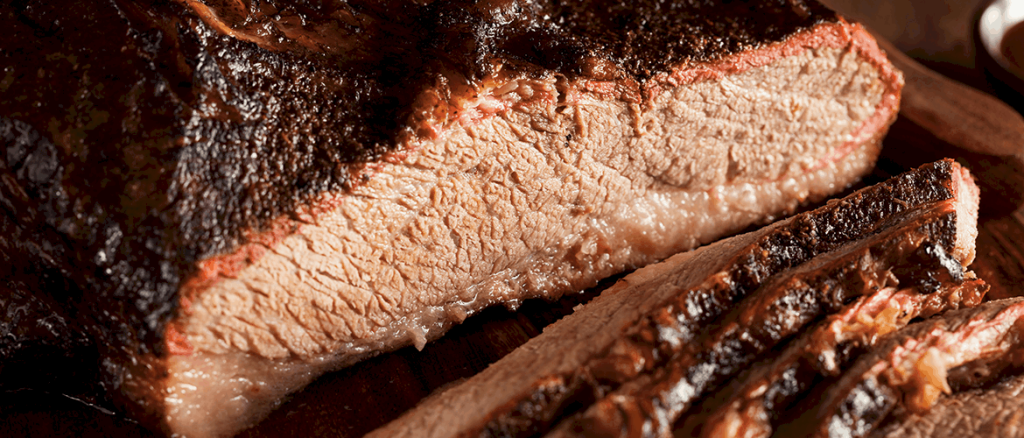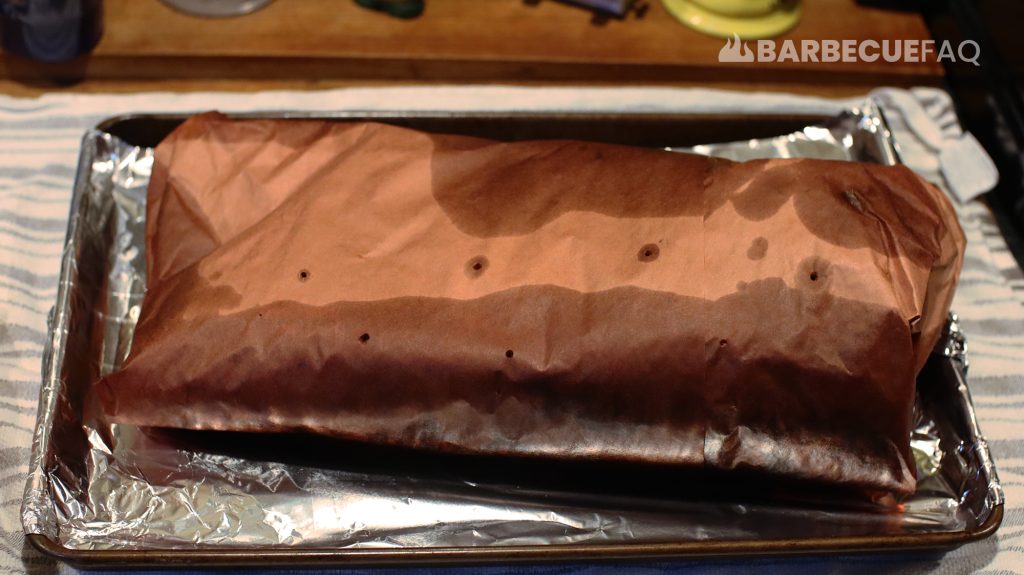In my opinion, the best woods for smoking brisket are post oak, pecan, or hickory.
If you’re someone who doesn’t like lots of smoke, using a fruitwood like peach, cherry, or apple are also great options
1. Post Oak is the Most Traditional Option
The region most popular for smoked brisket is Central Texas and in Central Texas they smoke with Oak.
Meaning, if you’re smoking food for guests or family and you don’t know how much smoke they like, your safest bet is also Oak.
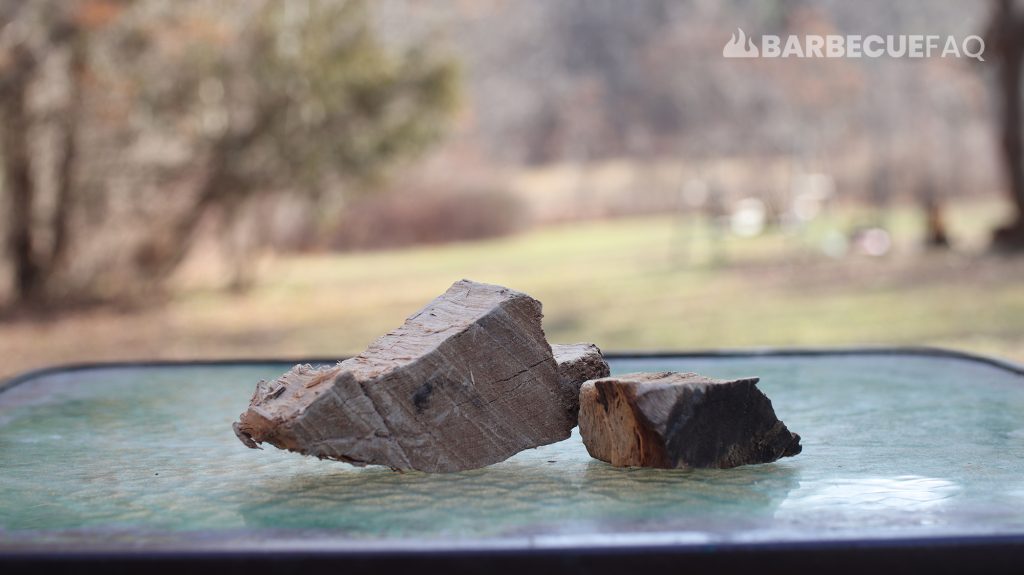
Post-oak goes well with pretty much any meat – especially beef.
It offers a mild smoke flavor that’s noticeable without overpowering the food.
Personally, I’m a big fan of actually tasting the meat I’m smoking. Meaning, the dry rubs/spices as well as the smoke only exist to compliment the food and to create layers of flavor as you chew as nobody wants to just eat a mouth full of smoke.
I would consider oak stronger than fruit-woods like cherry, apple, or peach.
But it’s much lighter than hickory or pecan.
This is the reason people who make wood pellets for smoking will use Oak as a “filler” wood.
Oak offers a consistent heat source/burn rate (stable BTUs) for the pellets and the other hardwood is more-so used for flavor (they also typically leave the bark on the flavor wood so that flavor comes through).
2. Hickory is also Traditional
If you’re someone who likes a pronounced smokey flavor, hickory is a great choice.
Woods like hickory and oak are also often used together because they burn similarly.
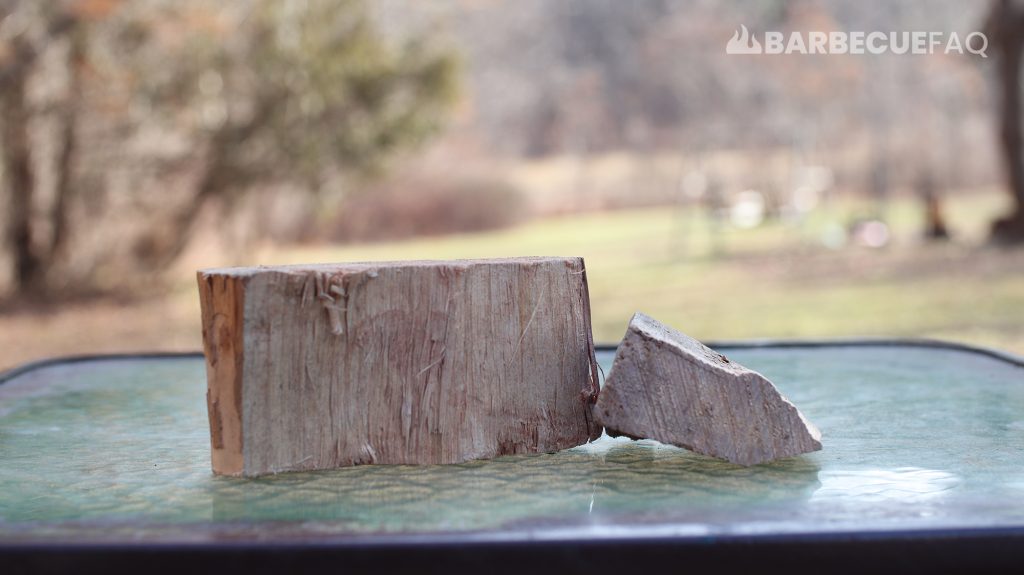
A major benefit of hickory is that you don’t really need a lot of it to impart a smokey flavor.
If you’re someone who smokes with wood chunks or chips on a charcoal smoker, this is beneficial as won’t need to replace the wood often.
3. Pecan Wood
Pecan is a mild wood that is often said to have a sweet flavor – sometimes described as spicy/nutty.
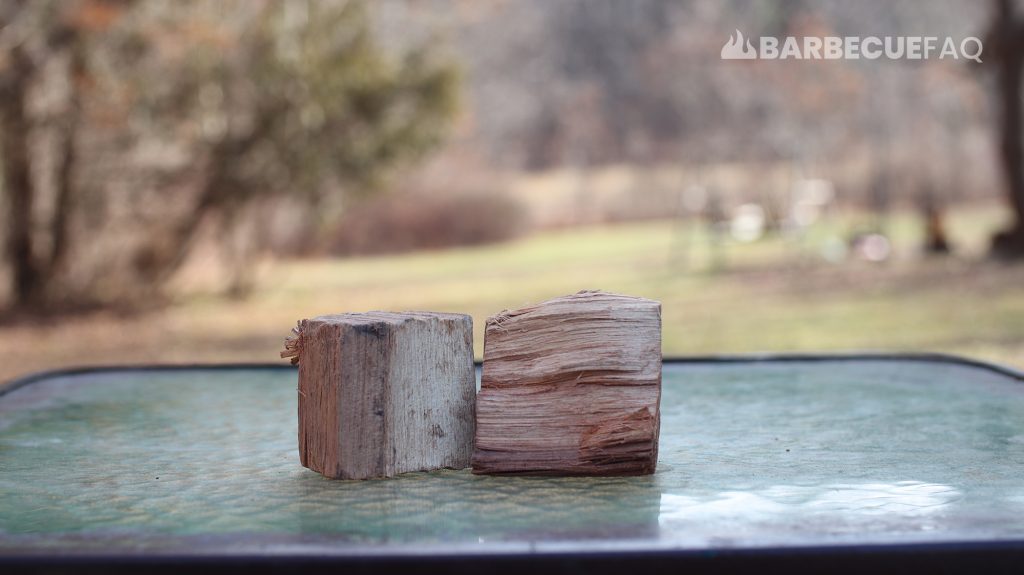
It doesn’t tend to burn as long as oak or other species of hickory (pecan is a species of hickory). For this reason, it’s usually used for shorter cooks like pork ribs or combined with other hardwoods like Oak.
Pecan smoke is also rather unassuming, much like Oak.
4. Fruitwoods for Brisket?
For some reason, a lot of the websites like to say that pretty much all fruit woods will impart a “fruity” flavor onto food.
While I can certainly tell you that the smoke smells sweet, I wouldn’t necessarily say the smoke tastes sweet.
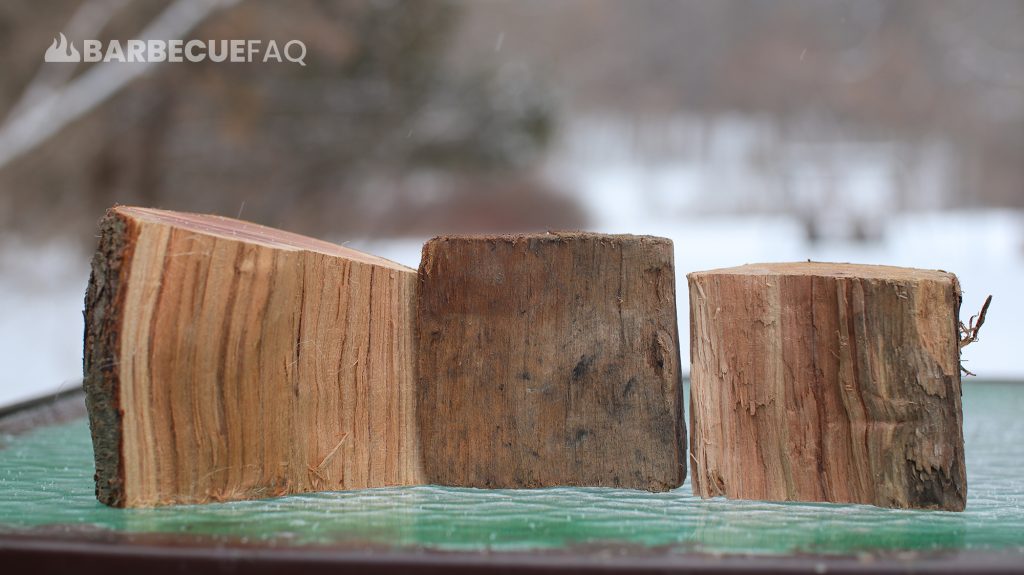
Maybe it’s more so your brain relating something like cherries to be sweet so the wood smoke must be sweet.
You could argue that since flavor is linked to both taste and odor that when the smoke particles enter your nose, they’re also perceived in the mouth.
Nevertheless, fruitwoods like Cherry, Apple, and peach are popular for smoking brisket.
I’m personally a big fan of cherry wood with pork ribs but I have used cherry a number of times with brisket.
Cherry wood is also known for imparting a deep mahogany color onto meat. However, if you’re smoking meat for 12+ hours, the meat is going to take on a dark color regardless of the type of wood you choose to smoke with.
Here’s a brisket after 6 hours of cherry smoke:
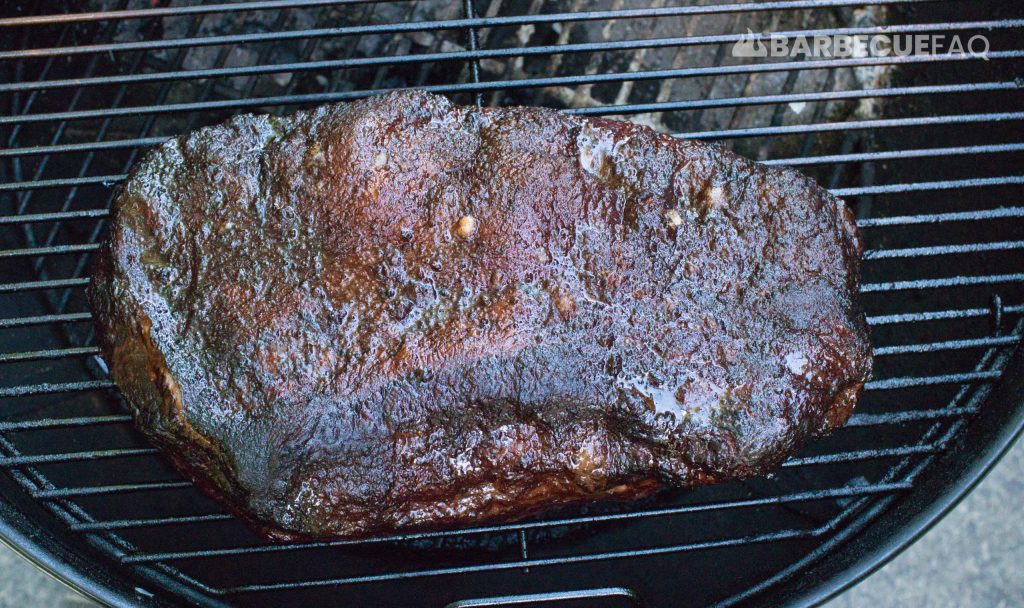
A Quick Word About Hardwood “Flavors”
Almost all of the resources you’ll find on the internet for smoking meat will lead beginners in the wrong direction.
Often, you’ll read articles that will tell the reader to use X species of wood with Y type of meat.
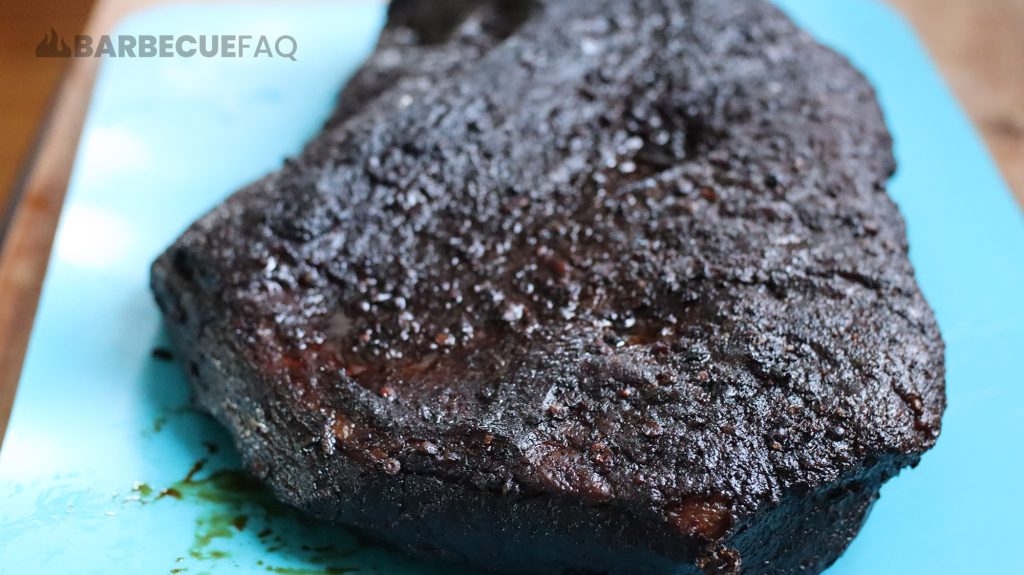
However, things don’t really work like that with smoke. More or less, hardwood smoke exists on a spectrum from mild to strong.
The mild woods include fruit-woods like apple, cherry, and peach. In the middle of the spectrum is oak, pecan, and hickory. At the end of the spectrum is mesquite, which most folks would consider strong.
At this point, the other articles on the web will then become super nuanced and start describing the different wood smoke “notes” like they’re a Sommelier describing wine.
This concept is even further complicated by the fact that the chemical byproducts of wood combustion are not universal. They depend on the species of wood, age, and mineral composition of the soil.
Meaning, the hardwood grown in New England will taste different than the hardwood grown in California.
There are also several different species of hardwood, like oak. Meaning, when someone says to use “oak”, they could be referring to any number of different species.


